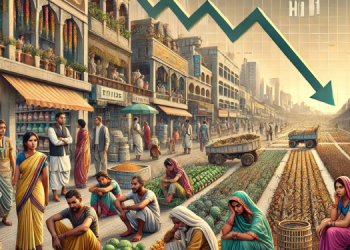Mumbai: The stay-at-home mandate has changed the behavior and attitudes of many Indians. Indians who were born and brought up asking for ‘Dhaniya’ or ‘Mirchi’ free from the vegetable vendors are now buying vegetables and other consumables without asking for prices. Stay-at-home orders have thus caused visible major shifts in people’s behavior.
Television grows strength to strength during lock-down
The study suggests TV still shines over OTT. 43% see cable TV as the primary entertainment in high-income households. 13% across the sample size have re-activated their DTH / Cable subscription.
Interestingly, ‘news’ has emerged as the new GEC’s. A staggering 64% of TV viewing time across the TV viewing population is spent on the news channels. 43% believe that news reporting is unbiased and 27% believe that there is a clear indication that few news channels are pro a particular political party.
Newspaper poised for a strong return
Lots of international researches suggest 21 days can break or form a habit. However, this study suggests otherwise when it comes to a daily newspaper. 74% miss their daily newspaper and are waiting for the service to resume.
While 29% have moved to read newspapers online, only 4% would unsubscribe from the hard copy. Looks like the newspaper is a habit like coffee that has grown on the Indian palette, making it difficult to part with.
India’s older adopt digital
The study shows a sharp increase, as much as, 47% adoption among elders (55-65 years) of e-commerce – ordering milk, grocery, and home essentials, and paying through wallets / UPI.
The banks have been promoting Internet banking for over a decade, in just the last month the data suggest that first-time users have increased by 28%. The maximum shift of 33% is among the age group of 35-50 years age segments – this is the ‘bankers’ delight segment as it is the most profitable customer band.
COVID – 19 helps push the ‘Make in India’ agenda
42% believe that there is an active and deliberate attempt by China to spread COVID across the world for economic gains. This has led to a strong anti-China sentiment.
The data suggests that 47% of Indians are willing to pay up to 25% higher for Indian made goods over Chinese made ones. There is a strong sentiment that the world should unite against China to stop using China as the world’s manufacturer, even if it is cost-inefficient.

Commenting on the outcome of the study, Ajay Verma, Managing Partner, Enormous Brands, said, “The young Indian population is behaving very differently from other parts of the globe. The study suggests a high level of optimism even in a situation that has brought the entire world in a lock-down and also showcased that households feel confident about the revival of the Indian economy.”
He further added, “This study was conducted to help brands understand how the current situation is molding the habits, behavior, and attitudes of Indians. We believe this will help us shape client communication and offer strategic counsel in line with the prevailing sentiments of the consuming class.”

















